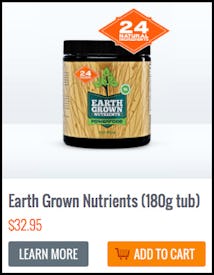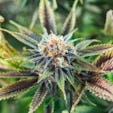 I never thought I would be buying weeds at the store, and I certainly never dreamed that I’d be eating them – especially dandelions! When I was a child, it was the flower I’d twirl around with on a sunny day, making wishes as the seeds floated all around me.
I never thought I would be buying weeds at the store, and I certainly never dreamed that I’d be eating them – especially dandelions! When I was a child, it was the flower I’d twirl around with on a sunny day, making wishes as the seeds floated all around me.
Dandelions were the weapon of choice to use on my defenseless little brother – I can’t even count the number of times I rubbed that yellow flower all over his face, turning him completely yellow (we had a lot of dandelions in our yard).
As I got older, that yellow-turned-white flower became a despised weed that was the focus of weekend chores, and for most of my adult life it’s been a pesky weed that occasionally triggers childhood memories. Which is why I was surprised and a little confused the first time I saw them for sale in my local grocery store. I was so confused I even asked the produce guy if these leaves and the backyard weed were one it the same.
Sure enough, they were! After some research into the benefits of eating dandelions, this weed now has a whole new meaning to me – nutrition.
Nutrient Content
Dandelion leaves provide vitamins C, K, B1, B2, B6 and minerals like calcium, copper, manganese, and iron. These leaves are also very high in brain-boosting choline, flavonoids, and phytonutrients. One of the most abundant vitamins however, is vitamin A, containing even more than carrots (14,000 IU versus 11,000 IU).1 Dandelion leaves also promote eye health as they provide copious amounts of lutein and zeaxanthin.
Benefits Beyond Nutrients
Dandelion leaves and roots have long been used as a medicinal plant for a variety of ailments. Traditionally, Native Americans used them for stomach ailments like distention, nausea, and heartburn. Modern-day Europe still uses dandelion leaves for medicinal purposes while science works to uncover the mechanisms behind their diuretic and anti-inflammatory properties. (2,3)
Extracts of dandelion have also been shown to function as a diuretic. Due to the high content of potassium and magnesium, extracts may help you avoid electrolyte imbalances seen with pharmaceutical use. (4) The leaves and roots also have known digestive and detoxification effects through stimulation of liver and gallbladder bile release. (1,5)
The roots and leaves have a strong prebiotic effect, containing high amounts of fructooligosaccharides (FOS).6 FOS is a type of resistant starch with the unique ability to feed only the good bacteria living in your colon. This means that eating dandelion leaves will help increase beneficial bacteria that outcompete bad bacteria for both food and space,1 along with synthesizing vitamin K and B.
Storage And Use
A plant that hasn’t bloomed will have leaves that are less bitter and are great for salads, whereas post-bloom the leaves are larger and more bitter, so they’re better steamed or sautéed. The roots can be roasted and ground to make “coffee”. Full disclosure, it doesn’t exactly taste like coffee, but it does have a nice roasted flavor that provides a load of prebiotics, especially roots that are older and harvested in the fall when FOS content is highest. The leaves and roots can also be dried and used to make a diuretic tea. (5) Mix in a little stevia or xylitol to balance the bitterness.
To store dandelion leaves, wash and dry them thoroughly, then place them in an air-tight container lined with a dry paper towel. To prepare the roots, roast and grind them, then store them in an airtight container for use as coffee. Or you can let them dry out and store them in an airtight container for future use in teas.
Dandelions aren’t just a pesky weed or wishes to be had blowing in the wind. They are a food that offers a ton of nutritional value in both solid and liquid form. So the next time as you’re slaving over weed-pulling in your organic garden, keep pulling the dandelions. But make sure to pull off the leaves, dig up the roots, and set them aside for a salad, a nice addition to a sautéed mixture of veggies, or a good hot cup of tea or coffee!
References
1. Pizzorno JE, Murray MT. Prebiotics, Synbiotics, and Colonic Foods. In: Textbook of Natural Medicine. Kindle Edi. Elsevier Churchhill Livingston; 2012:Kindle Location 73146.
2. Jin YR, Jin J, Piao XX, Jin NG. The effect of Taraxacum officinale on gastric emptying and smooth muscle motility in Rodents. Neurogastroenterol Motil. 2011;23(8). doi:10.1111/j.1365-2982.2011.01704.x.
3. Schütz K, Carle R, Schieber A. Taraxacum–a review on its phytochemical and pharmacological profile. J Ethnopharmacol. 2006;107(3):313-323. doi:10.1016/j.jep.2006.07.021.
4. Clare B a, Conroy RS, Spelman K. The diuretic effect in human subjects of an extract of Taraxacum officinale folium over a single day. J Altern Complement Med. 2009;15(8):929-934. doi:10.1089/acm.2008.0152.
5. Pizzorno J. The Encyclopedia of Healing Foods. Kindle Edi. Atria Books; 2010.
6. Trojanová I, Rada V, Kokoška L, Vlková E. The bifidogenic effect of Taraxacum officinale root. Fitoterapia. 2004;75(7-8):760-763. doi:10.1016/j.fitote.2004.09.010.

)





